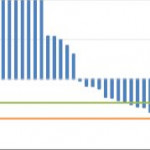Editorial: Even ‘low-dose’ cabazitaxel requires careful and meticulous patient selection
In the present issue of BJUI, Clèment-Zhao et al. [1] have evaluated the safety profile of a 2-weekly regime of cabazitaxel (CBZ) at a dose of 16 mg/m2 in 43 patients with progressing, metastatic castration-resistant prostate cancer (mCRPC). Treatment was planned to have been delivered for a total of six cycles, with each cycle consisting of two 2-weekly applications of CBZ. The majority of patients had already received two life-extending systemic therapies, such as docetaxel and abiraterone acetate. Despite the prophylactic use of granulocyte colony-stimulating factor (G-CSF), 11.6% and 4.7% of patients developed grade ≥3 neutropenia or febrile neutropenia, respectively, and one patient even died from treatment-related toxicities. Only 75% of the scheduled six cycles could be delivered, although dose reduction of 20% was carried out in 37.2% of the patients. The authors recommend this type of treatment for elderly and frail patients and they provide the reader with the impression that the delivery of such a toxic regime in elderly and frail patients is accordance with the guidelines [2].
Based on the International Society of Geriatric Oncology (SIOG) guidelines [2], it is evident that the term ‘frailty’ requires a dedicated and sophisticated geriatric assessment using, for example, the G8 questionnaire. If a score <14 is calculated on this questionnaire, and the patients have been identified as having irreversible impairment, an intensive geriatric intervention might be undertaken to correct the underlying comorbidities. Only in the presence of correctable comorbidities should an adapted cancer therapy be initiated, while in their absence best supportive care seems to be the optimal approach. Of the 43 patients in the present phase II trial, none underwent a geriatric assessment and three-quarters of the patients had an Eastern Cooperative Oncology Group (ECOG) performance status of 0–1; therefore, only a minority of the treated patients represented frail patients, and conclusions should be drawn with great caution, also considering the relatively low number of patients recruited.
The frequency of 11.6% and 4.7% of grade 3/4 neutropenia and neutropenic fever, respectively, and an overall frequency of 34.9% grade 3/4 treatment-emergent adverse events is still quite high compared with the data from studies on the German Early-Access Programme (EAP) and the European EAP on CBZ, which included 111 and 746 patients with similar disease characteristics, of whom 7.2% and 15%, respectively, developed grade ≥3 neutropenia, despite non-regular use of G-CSF [3, 4].
Several factors might have contributed to the relatively high frequency of treatment-emergent adverse events in the present study. Firstly, the cumulative CBZ dose was 144 mg/m2 in the present study as compared with 100 mg/m2 in the European EAP and 162.5 mg/m2 in the German EAP, so that there was not a significant reduction in dose despite the lower dose delivered at each cycle. This might have contributed to impairment of bone marrow function over time. Secondly, bone marrow reserve appeared to differ among treated patients: ~50% of patients already had neutrophil counts below the normal values. As we have shown recently, neutrophil counts <4 000/mm3 were associated with an odds ratio of 1.73 (95% CI 1.25–2.39; P < 0.001) for developing grade 3/4 neutropenia [4]. Thirdly, age ≥75 years, but not age <75 years or ECOG performance status ≥2, was associated with a 1.66-fold (95% CI 1.09–5.52; P = 0.018) increased risk of significant neutropenia in the above-mentioned studies [3, 4]; however, it is unclear how many patients were aged >75 years in the present study.
As a result of these factors, it is still necessary to carefully select elderly patients with mCRPC prior to the recommendation of cytotoxic CBZ therapy, even at a reduced dose. Despite the fact that there is some weak evidence that severe neutropenia might be associated with a survival benefit, we need to bear in mind that this evidence is from post hoc analysis of fit and non-elderly patients recruited in the TROPIC trial [5]. We have no meaningfuldata from a cohort of elderly and vulnerable/frail patients and we have no data at all on quality of life in these patients; therefore, we should not overtreat and we should only consider frail and elderly patients with mCRPC for CBZ treatment if they have undergone geriatric assessment that has shown correctable comorbidities. Otherwise, there are numerous other treatment options in addition to chemotherapy, including best supportive care [6].
With regard to therapeutic efficacy, we always find it difficult to report median overall survival times of 15.2 months when the median follow-up time is only 12.9 months.



